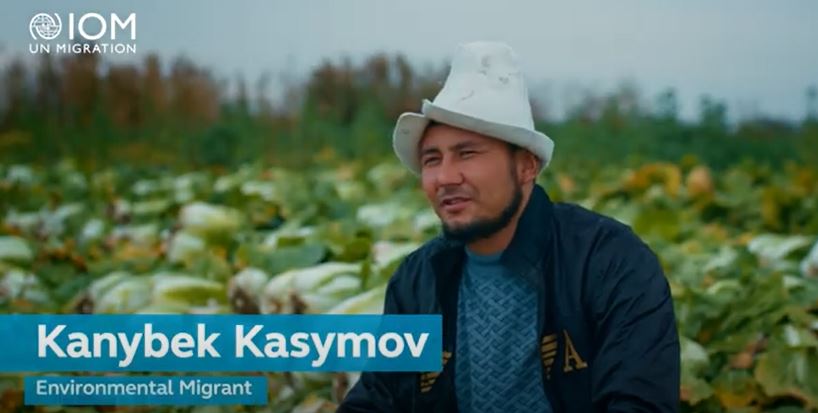
Environemental Migration in Kyrgyzstan- Kanybek’s Story
Kanybek Kasymov is an environmental migrant. Climate change impacts has led him to change his place of residence twice. First, from Khujand Province in northern Tajikistan, Kanybek moved to Kyrgyzstan. At that time, the Leilek district of Batken Province seemed the most suitable for agricultural activities. But over the years, heat and drought forced him to leave this area as well. The Government of the Kyrgyz Republic Included “climate-induced migrants” in the Migration Policy Concept of the Kyrgyz Republic for 2021-2030 Section 6: Migration and Security and encourages stakeholders to deepen the understanding of the complex interactions between the environment, climate change, and migration dynamics, which in turn allows to develop and implement effective policies aiming to mitigate the negative consequences of forced environmentally induced migration. From the Concept of Migration Policy. 6: Migration and Security. Environmental degradation and the effects of climate change are forcing environmental migration. Among the most common factors that trigger migration processes is the lack of clean water and land, crop failures, and natural disasters. This leads to a decrease in the number of livestock breeders and farmers and the devastation of territories in remote areas and border areas. There is a lack of awareness among the government authorities and the public about climate change and its link with migration, climate disasters, and potential adaptation measures. Therefore, a number of measures need to be taken to account for and integrate climate and other risks, and there is a need to raise awareness among the population on how to deal with this.
The International Organization for Migration (IOM), as the leading intergovernmental migration agency, has been at the forefront of operational, research, policy, and advocacy efforts, seeking to bring environmental migration to the heart of international, regional, and national concerns, in collaboration with its Member States, observers, and partners. In 2021, IOM launched its 10-year Institutional Strategy on Migration, Environment, and Climate Change 2021-2030.
 IOM STRATEGIC OBJECTIVES The Organization pursues three broad objectives in managing environmental migration, intervening at each stage of the migration cycle: “We develop solutions for people to move” – Managing migration in the context of climate change, environmental degradation, and disasters due to natural hazards. “We develop solutions for people on the move” – Assisting and protecting migrants and displaced persons in the context of climate change, environmental degradation, and disasters due to natural hazards. “We develop solutions for people to stay” – Making migration a choice by building resilience and addressing the adverse climatic and environmental drivers that compel people to move.
IOM STRATEGIC OBJECTIVES The Organization pursues three broad objectives in managing environmental migration, intervening at each stage of the migration cycle: “We develop solutions for people to move” – Managing migration in the context of climate change, environmental degradation, and disasters due to natural hazards. “We develop solutions for people on the move” – Assisting and protecting migrants and displaced persons in the context of climate change, environmental degradation, and disasters due to natural hazards. “We develop solutions for people to stay” – Making migration a choice by building resilience and addressing the adverse climatic and environmental drivers that compel people to move.